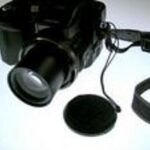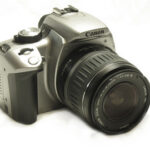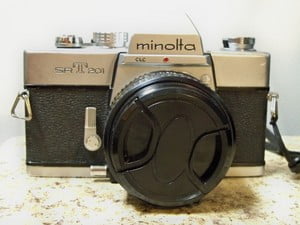Taking pictures when there is very little light is one of the most challenging things in photography. This is especially true when using digital cameras because almost all of the automated features that come with the camera are geared toward taking pictures in normal or bright light. But fear not, it can be done. There is good reason for trying too, images taken in low or soft light tend to create a more gentle or softer mood. They also help to smooth out wrinkles and hide blemishes. In short, images taken in low light are generally considered more on the artsy side of photography because of the extensive possibilities available when using shadows. Below are ten very useful tips to help you get the most out of your low-light pictures.
1 – Preparation. One of the most important things you can do to take good pictures in low light is to prepare carefully and set things up so as to assure complete control over all aspects of whatever it is you wish to photograph. With low light situations, for example, you generally have the option of using the exact type of light you want. You can use low wattage bulbs or candles. Or perhaps some street light. Whatever it is, you don’t have to be at the mercy of sudden changes. Pick and choose your lighting carefully. Also, prepare your setting, your subject and your equipment, if at all possible. Granted not all low-light photographic sessions can be carefully planned, but since taking low-light pictures is so difficult, you’ll find more often than not your planned pictures turn out better. In planning and preparing, consider your equipment very carefully. In most cases, a tripod is a must. Due to slow shutter speeds it will be virtually impossible to keep your camera still enough to produce clear pictures otherwise. You might want to study the user’s guide that came with the camera too, not only because it might have some low-light features, but because you likely will want to make some adjustments to your shutter speed or your aperture size. If you’re not sure how to use these features, you might consider reading some online material that explains these concepts.
2 – Style. Another part of preparation and setup is choosing the type of low-light photographs you want to take. For example, you may want to pose a model with shadows on one side of their face. Or you may want to try for a silhouette. You might want to shoot in black and white, or sepia. Choosing a style to shoot for beforehand will help you learn what works and what doesn’t. Also, if you are shooting images of a person, you generally only get so much time. You don’t want to waste it on figuring out what you want to do.
3 – Using the flash. Whenever there is a low-light situation, there is always the option of using the built in flash. The choice is always yours to make given the circumstance. Using the flash however, in very low-light situations is quite often guesswork because you won’t be able to rely on your automatic light sensor. The result quite often will be too much light bouncing off faces or other objects and dark backgrounds. While this can be provocative and mysterious in some settings, in others, its usually just annoying. To get around this problem, you need to learn about shutter speed and aperture size and how to adjust them on your camera. It’s not that difficult but it does take some time and practice.
4 – Backgrounds. Choosing backgrounds when taking pictures in low light is quite different from what you’d consider when taking pictures in brighter light. Sometimes in fact, when using low-light you won’t be able to see the background at all. Most low-light photography is centered around the objects or subject in the foreground. Backgrounds are used to make the subject appear as if hovering in space or to provide a subtle mood. Posing your subject in front of a fireplace for example, provides a sensual type of light, as well as providing a background that can set the mood for the image you’re trying to achieve. For the most part though, it’s best to keep your backgrounds simple and dark. Illuminate your subject gently and your backgrounds will generally take care of themselves. Just be sure there is nothing reflective back there.
5 – Skin tones. Something you might want to consider when taking low-light photographs of people is the color of their skin. In extremely low-light, fair skinned people tend to show up in your photographs more readily. On the other hand, darker skin tends to absorb light, which add to depth of color. In addition, darker skin tends to reflect colors other than white. Therefore, you might try bouncing your low light off a wall to see what effect it has on the skin color of your subject. Also, lighter skin tones tend to reflect more light back at the camera when using a flash.
6 – Your subject. When taking low-light photographs, it’s always best to consider your subject very carefully. Some people and objects just naturally photograph better in low-light than do others. For example, posing a person with fair skin with firelight, can sometimes cause their skin to take on a glowing or ghostly sort hue. This may or may not be what you’re after. On the other hand, people with very dark skin tend to absorb some of the white light and thus reflect back more of the other deeper colors, such as gold, or maroon. On the other hand, if your subject is an object, you might want to consider using something that is more easily seen in low light and is not reflective as that tends to create problems in figuring out which way the light is going to go.
7 – Setting the mood. When taking low-light photographs there are two types of moods to consider. The first is the mood of the people involved. Your mood, your subject’s mood, or even the mood of those observing. All of this will tend to effect the tone of your photographs produced. The other type of mood is the overall tone of you picture and the “scene” you’ve created. Low-light photography by it’s nature is generally darker, which causes people to feel dark things when looking at them. Depending on the mood you capture, this darkness can be sensual, scary or grim. It all depends on your technique. In general, smooth lines and soft transfers between colors or images tend to be more sensual. Stark transitions or clear lines between black and white tend to be more grim. Combining the two is what generally causes scary images.
8 – Your camera. One essential fact of life is this. If you want to take good pictures in low light, you need to get fairly well acquainted with your camera. Read the user’s guide and anything else that came with it. Then read articles online about low-light photography. Learn to adjust your aperture and shutter speed. The better you know your camera the more control you’ll have when taking pictures and the more confidence you’ll develop in your ability to take pictures in almost every circumstance.
9 – Moving objects. Sometimes it’s fun to take pictures of something that is moving. Like car taillights for example. In low light it makes it appear as if your car has grown a lighted tail. This same technique can work in other ways as well, such as capturing a child running with a sparkler or a toy train on it’s track on Christmas morning. The secret to creating these types of pictures is slowing the shutter speed dramatically and adjusting the aperture, then holding the camera nearly perfectly still. To change your shutter speed and aperture size, you’ll need to consult your camera user’s guide. To hold your camera still, try using the timer so you won’t be touching it at all when it goes off. You’ll need a tripod too, obviously, or at the very least a good place to set the camera before setting the timer.
10 – Take LOTS of pictures. As with any other type of digital photography, take a lot of pictures. In between make adjustments. For example, you can change the light a little, or the angle. Or apply make-up to your model. Or try different bulbs or move to a different room. Try shooting inside and out. Shoot from up high or down low. Move closer. Move farther away. Anything you can think of to change things a little. Then, download your pictures to your computer as soon as possible so you’ll be able to remember what you did.
These ten tips above for taking pictures in low light with your digital camera are meant as more of a guide to exploration than a true how-to, step-by-step, manual. The very best thing you can do to improve your low-light photographs is the same thing you can do to improve any other type of photographs you make. Practice. Take your camera everywhere you go and take pictures. Keep a lot of batteries handy and if you can afford it, load up on memory. Take a lot of pictures of everything and while you’re doing it, take note of what settings you’re using and the conditions. This will help you add to your skills for the next picture. In addition, try things. Be courageous and give in to your inspirations. Flex your imagination and enjoy yourself while you’re doing it and it will show in your work. Good luck and I hope your pictures turn out beautifully.






